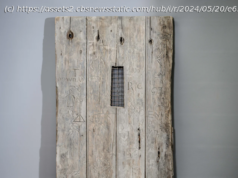Array
Some two decades ago, the Smithsonian’s National Portrait Gallery acquired a 19th-century album featuring 2,000 paper portrait silhouettes, including those of George Washington and Thomas Jefferson, made by the traveling artist William Bache decades before the advent of photography. But until recently, the gallery knew precious few details about the majority of those pictured. Complicating research was an unwelcome surprise: In 2008, conservationists discovered that the album’s pages and binding were contaminated with arsenic, a toxin ubiquitous in the 1800s before it was understood to be poisonous. It could not be safely handled or shared with visitors without special precautions for hazardous materials. But now, anyone can view a digital version of the album, titled «,» thanks to funding from Getty’s Paper Project initiative — and the help of hazmat suits. With the launch of the website, the National Portrait Gallery’s curatorial team has also revealed the identities of the hundreds more of those who sat for Bache. Over the past few years, they’ve matched the names Bache listed with each portrait to real people using the genealogy database Ancestry, which includes early US census reports; extensive birth, marriage, death and immigration records; and family trees dating back centuries.In sharing the work with the wider public, the curators hope to reveal even more about Bache’s subjects, the vast majority of whom were not notable figures, but everyday people who wanted their silhouette made. With photography still decades away, silhouettes were the first opportunity for people to have pictures of themselves and loved ones at home. «We’re hoping that, as people do their genealogy, relatives can contact us,» said Robyn Asleson, the museum’s curator of prints and drawings, in a phone interview.






